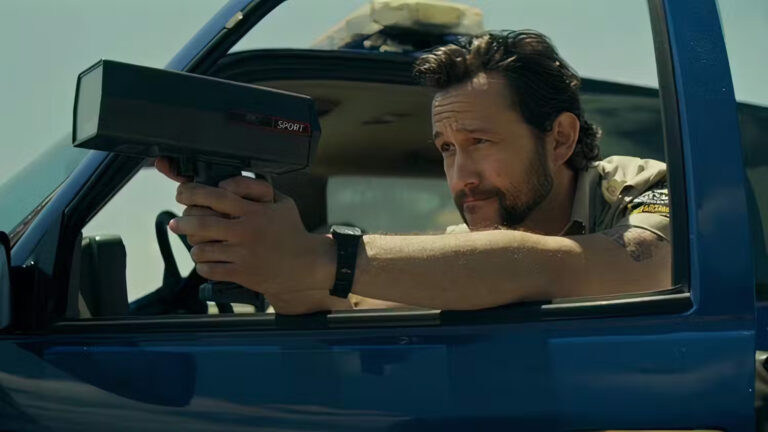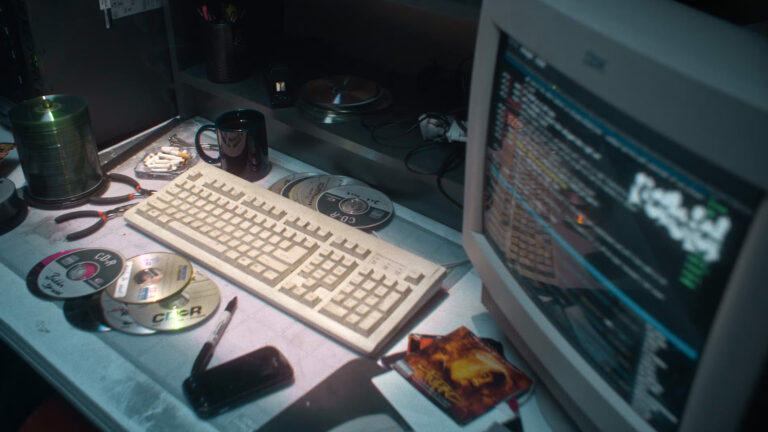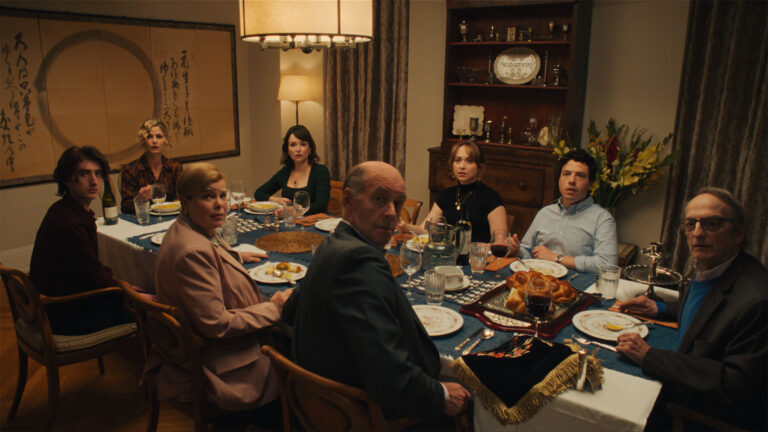One of the many things that I took away from the Cut/daily Meets… interview with Marvel Studio’s Katie Hinsen is the idea of looking outside of your own echo chamber for fresh insights. In particular the idea of reducing the time it takes to improve your skill set, which is highlighted by her response to the question “What’s the number-one thing that has helped you shorten your craft’s learning curve?”
“Learning from other industries how they approach similar problems to those we have.
Shipping and Logistics, for example, are getting things safely and efficiently from one place to another. We do that with data and media. […]
I’ve learned more, faster, from going outside our industry than from looking at our own past and present.
Getting outside of the echo chamber is a game-changer when it comes to learning, because it gives us more resources, broader perspectives, and a glimpse at our possible futures.”
—Katie Hinsen, Director of Production Technology at Marvel Studios
In light of this, I wanted to share some lessons with you on the power of transforming problems that I took away from ‘rockstar’ mathematician Terence Tao’s Masterclass on Mathematical Thinking.
Yes, math will teach you more about post!

I’ve illustrated each of these with lessons from some hardworking editors that I’ve heard over the years, which I hope will give you some fresh approaches for ways in which to transform common editorial problems.
Mathematical frameworks for transforming problems
Terence Tao defines it like this:
One of the great insights of mathematics is that there are different frameworks, different ways of thinking about the same mathematical problem, which may look quite different, but are mathematically related.
One of the great advantages is that we can then transform the problem and think of it in a new way, which has, maybe, nothing to do with the original context.
The human brain has many different modes of thinking, so we have visual modes, we have symbolic modes, we have modes where we are trying to fight some sort of adversary, and by changing the language of your problem, you are activating different areas of your brain.
So, for instance, if you’re transforming the problem into a geometric problem then you’re activating the visual centers of your brain.
Transformation is a way of swapping your thought patterns.
—Terence Tao, Mathematician
So how does Terence’s insight about mathematical transformation help people like us who are working in post-production?
The same problem-solving frameworks and modes of thinking that Terence is putting to good use in solving complex mathematical challenges every day are the same frameworks that we can employ in the edit suite.
Transforming narrative problems
Terence also suggests some practical ways of transforming your thinking to enable more creative solutions, regardless of the problem you’re facing.
Let’s take a look at three of these, backed up by some seasoned editorial wisdom to more directly apply these “external insights” to life in the edit suite.
Switch modes: walking, talking, rolling
“I know people who work with a pen and paper for a while on a problem, and if they get stuck, they take a walk.
They force themselves to think about the question while walking, without the pen and paper. And that’s a lot harder.
But it forces you to somehow only focus on the essence of the problem. Concepts that are simple enough to keep in your head at one time without having to write down any computations.
And that can sometimes lead to a better way of thinking about the problem.”
—Terence Tao, Mathematician
Of all of the techniques I’ll share in this article, simply going for a walk is a time-tested solution for problem solving that anyone can use at any time.
In Zach Arnold’s article on improving your creativity, he suggests that the act of walking (and doing nothing else) primes your brain for creativity.
Journalist Ferris Jabr, writing in the New Yorker, also has great insights on the power of going for a walk. They include how the physiological changes in your body improve your memory and attention, and build new connections between brain cells that increase longevity.
Even the rate at which you walk can affect your thinking. Slowing your pace slows your thoughts and, because walking doesn’t take any conscious effort, it allows you to shift your thinking to a different mode.
Because we don’t have to devote much conscious effort to our movement, our attention is free to wander. While we wander, so does our brain. As Jabr puts it, “this is precisely the kind of mental state that studies have linked to innovative ideas and strokes of insight.”
More eyes
“Talking about the problem to other people can help. And even if they’re not mathematicians, the process of verbalizing the problem can often lead them to actually realize what the problem is, when previously they were only just thinking about it, internally in their own head.”
—Terence Tao, Mathematician
For me, one of the biggest problems that an editor faces is staying fresh in the edit. How do you maintain that objectivity and perspective? This also seems to be the most comparable situation to a mathematician who’s reworking the same math problem over and over.
As the editor, you’re both the first audience and the proxy for everyone else’s first experience of the edit—even though you’ll have likely seen the edit “too many times” by that point.
So how do you transform the problem of staying fresh to your edit, while not being able to not watch it?
As Terence’s insight suggests, the absolute best way to see your cut with fresh eyes, is to just pull someone else into your edit suite to watch it with you. To have to “explain it” to them by letting them experience it for themselves. And editor Joe Walker concurs:
“What really changes the way you look at your film is when people are invited to come and sit in and then it becomes a chemical thing.
Some of the things you thought were working or that people would understand don’t work. You can just feel it in the room… These things you only really know in your bones when you’re sitting there in the dark with an audience, no matter how small.”
—Joe Walker, ACE, Oscar-winning editor
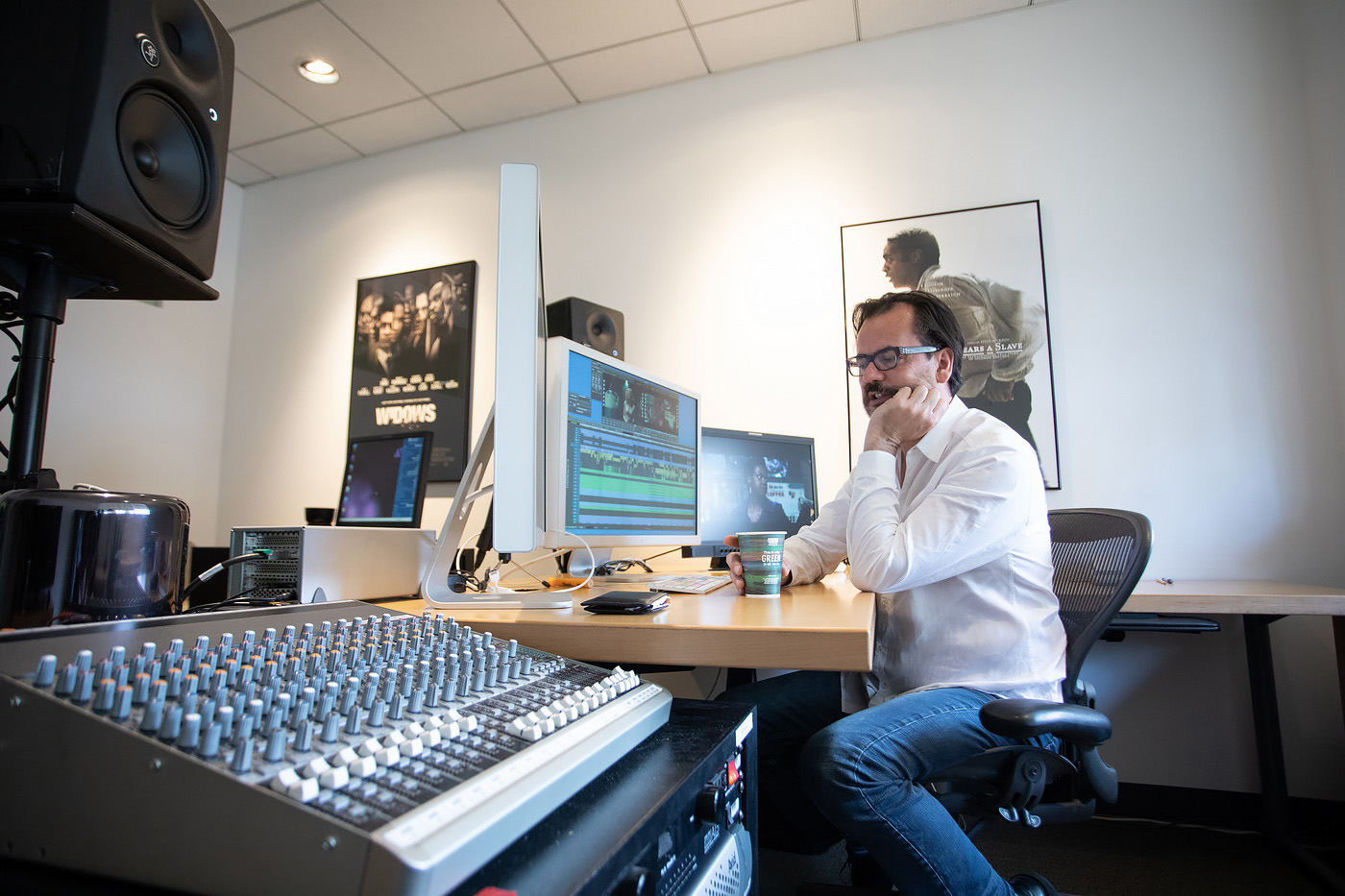
Even if the person watching with you says absolutely nothing at all, you’ll see your project in a whole new light. Everything that is and isn’t working will jump right off the screen at you.
Still need a little help? Try these…
Turn it down
When you mute the sound on your edit and just watch the images, ask yourself these questions:
- Does everything still make sense?
- Does the story flow?
- Are there shots that are held too long or too short?
- Do the emotions seem genuine?
The inverse of this technique is also really useful; turn off the pictures and just listen to the sound.
Without the distraction of the visuals, I often find a multitude of trims that can be pulled out of any dialogue-heavy edit—especially in documentary or corporate editing. It really helps you to spot unnecessary words, pauses or “you-know” and “sort of” verbal baggage that can be plucked out to tighten the cut.
See things in black and white
In this interaction I had with editor Chris Bové, he shared a great tip about running your edit in black and white to help keep color correction discussions off the table until the grade and because it “adds a sexiness to the offline and a vigor to the final-cut stage when color is reintroduced.”
It also helps to make this change after you’ve been watching your project in color for a while (or vice versa) to help reset your perspective on the edit, because suddenly it looks brand new.
Quick fixes for the long haul
Similarly, I’ve also heard of editors applying a horizontal flip filter to the whole edit, to see it from a ‘fresh perspective’ while one (apocryphal) story involved the editor turning the monitor upside down in desperation. It’s a similar technique to artists who use mirrors to check their work.
Making Problems Physical
“There was one time when I was trying to understand a very complicated geometric transformation in my head. I was rotating a lot of spheres at the same time.
And the way I ended up visualizing this was actually lying on the floor, closing my eyes and rolling around.
And I was staying at my aunt’s place at the time and she found me rolling around on the floor with my eyes closed and she asked me what I was doing and I said I was thinking about a math problem, and she didn’t believe me.
You know, you find whatever analogies, physical or mental, whatever that might work for you. And sometimes it might make you look silly, but that’s an occupational hazard.”
—Terence Tao, Mathematician
When Editor Myron Kerstein and Director John M. Chu were editing In The Heights, they had to restructure the entire film. This is a complex and mind-boggling challenge to face.
“In fact, during the first couple of weeks of post we did nothing but restructure the entire movie. We literally had our beautiful scene cards that our PA assistants put up on the wall, and then within days, they were all torn apart, all on the floor.
There’s a great picture of Jon just staring at all the cards thinking, “We have to figure out the right structure of this movie.”
—Myrson Kerstein, ACE, Editor
As Terence suggests—and many editors have found—being able to physically interact with a story structure in a more direct and symbolic form than moving the actual scenes and clips around on the timeline can liberate your creative thinking to see the problem in a whole new way. And unlock fresh solutions.
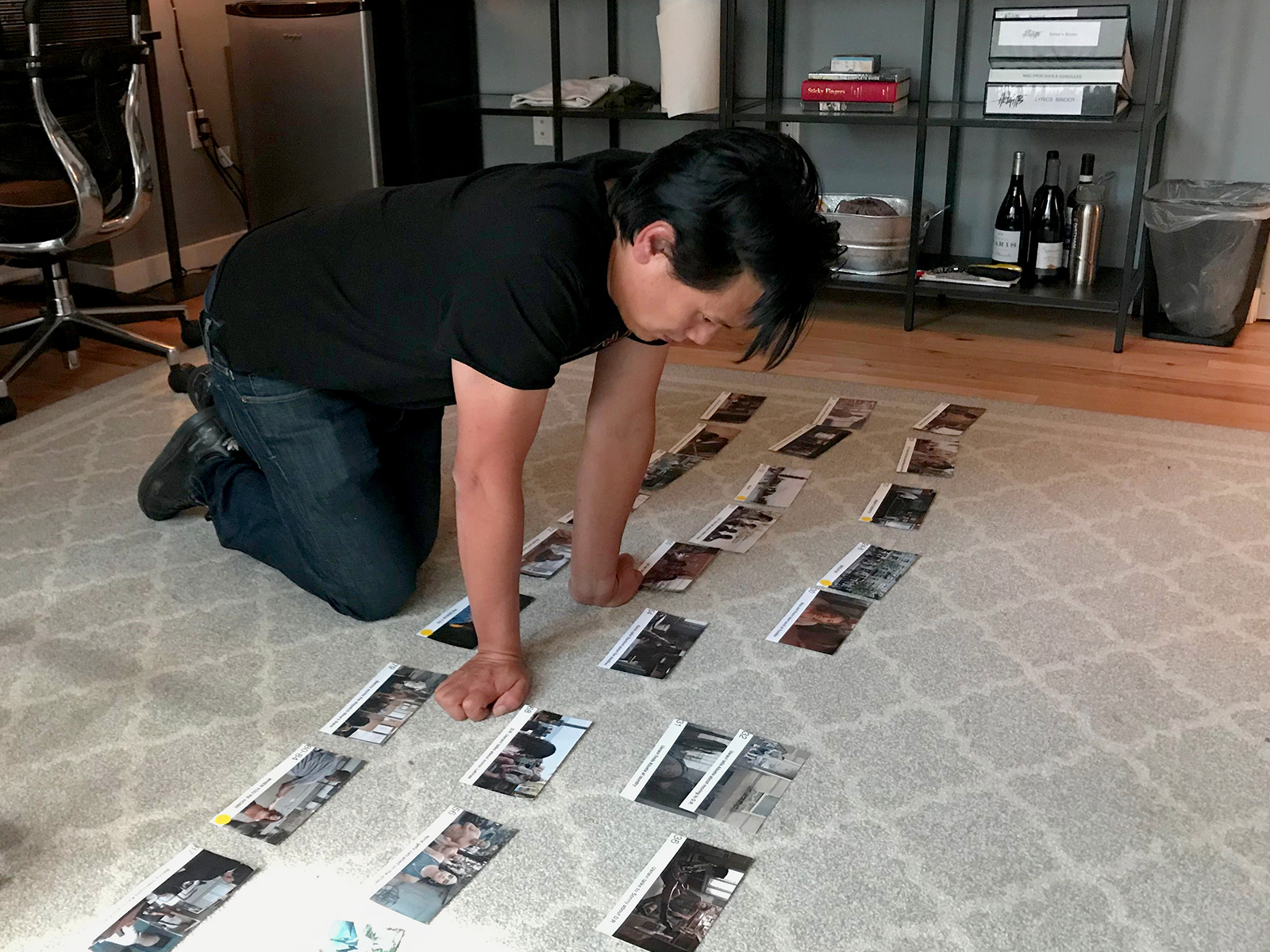
Scene cards are a great way to visualize and interact with the whole story structure of a film. Each card represents a single scene and has a short description underneath.
Not only can you track your progress by adding stickers to denote whether a scene is completed, you can also pick them up and easily rearrange the structure in front of you (and in your mind). This will help you hash out your current issues before even touching the edit on the timeline.
Pro tip: scene card photos
Editor Steve Hullfish shared a great tip about getting these scene cards printed as glossy photos (2 per 4 x 6 inch print) and including an empty white box so that you can either write notes on it with a whiteboard pen or color code them as a progress report as the scenes are finished.
Depending on the level of production you’re working on, taking your images to a local photo printing shop might be a big security violation, so you might have to buy a cheap photo printer.
Either way, they’ll look better than smashing them out on the office inkjet.
Post(ing) it
Editor Walter Murch has created his own more detailed system for mapping out the structure and flow of the narrative’s he works on, where the different colored and shaped Post-It notes represent different character arcs, cross-cutting of scenes, and story-turning points.

In this example from Particle Fever, you can see how he uses the Post-It notes to mark time, breaks, turning points (diamond notes) and more.
Operating at this level of detail probably only emerges from years of time and practice, but has the benefit of using different colors to keep multi-character pieces, whether scripted drama or corporate talking heads, organized in such a way that you can see how much of each character there is back to back.
Maybe you have too much of one, or they’re too clumped together.
Ideally you would replicate the Post-It notes colors in your timeline clip colors, so that you can keep both your Post-It Notes and your timeline in sync as you progress through the edit.
Rounding off
Whatever stage of post you’re in right now, whether working on your cut after the 100th or a 1,000th viewing, trying these techniques, even if just for a few short moments, will deliver fresh insights that you wouldn’t be able to find any other way.


